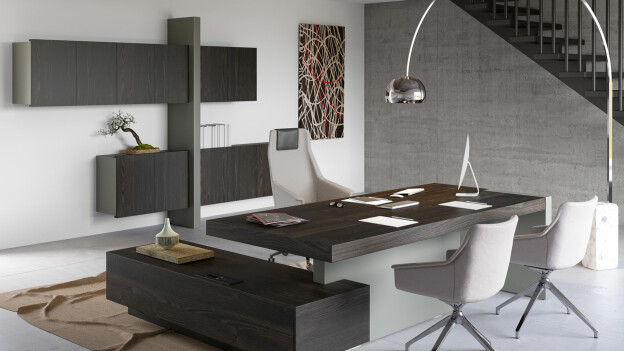Nowadays one of the problems that our clients have when choosing office furniture is not the shortage of supply, but quite the opposite: there are so many different offers, so varied and of such quality that define the criteria for choosing furniture Office becomes a “Chinese” task . To facilitate a little the work of the responsible of purchases of the company or of the independent designer that offers interior design and decoration services to its clients, in Spandan we have created the following quick guide to choose office furniture, a brief and concise list, but that It contains the main information you have to look at before making this profitable investment.
The space
The first criterion on which you will base your purchase decision is basic: what space will you furnish? Many furniture manufacturers create their catalogs based on the room or space where both furniture and auxiliary elements will be incorporated. The spatial criteria will serve us from two complementary points of view:
- The square meters that we have will allow us to determine the size of the furniture and also its shape: round or square tables for meeting rooms, stackable desks, storage lockers instead of individual drawers, etc.
- The main task developed in this workspace will allow us to choose furniture that adapts to the functionality that we are going to give them. For example, it is very different to buy chairs for the waiting room, seats that will be used very occasionally, than to choose ergonomic and functional operating chairs where our team spend long hours of work.
Design
A second criterion that will help us to choose office furniture is to choose a specific design style: classic, vintage, modern, functional, customary, innovative … A couple of interesting tips from our experts in integral design of workspaces:
- It is not mandatory that all rooms or workspaces maintain the same design line. Some of the most innovative companies intersperse different styles to convey freshness, spontaneity or modernity of their human team.
- The design of work furniture, a desk or a chair should never take precedence over its ergonomics and functionality. Do you remember the concept of “Design Thinking “? Designing always thinking about the use that the human being will give to each object is one of the keys to the success of the most productive companies.
The real need
The third criterion that will facilitate the choice of office furniture is to prepare a list of the basic and essential elements that you will need in your work space. Logically, each company, each professional will need a series of basic furniture to do their job, but there are three that are common to any office task:
- Seats. Operating chairs, steering chairs, high stools for rest areas, comfortable chairs for the waiting room … In any office we find different types of seats that must be chosen depending on the use we will give them and, also, the frequency of that use (daily, punctual, etc.).
- Desks and operating tables. Although our workers prefer to work standing up, they will always need an ergonomic surface where to use the computer, take notes, draw plans, attend to customers, etc. On the other hand, what would a productive office be without a meeting table?
- Filing and storage furniture. It can be the classic chest of drawers or the modern solution of the general locker, the cabinets that also serve to separate spaces or the shelves of a lifetime, in any office it is necessary to choose furniture that allows workers to archive their documentation, organize administrative paperwork, guard the personal data of your customers and suppliers, etc.
